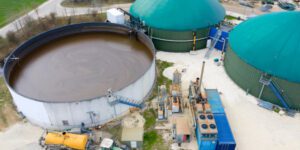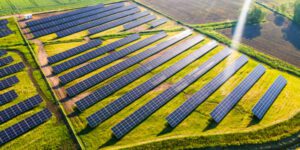
Introduction
As humans, we often categorize things into two categories: good or Bad, hard or simple, wealthy or poor, and stupid or smart. The same may be said for how people see various energy sources, such as clean energy versus dirty energy, green power versus brown power, and traditional energy versus renewable energy. Such idealized dichotomies, however, don’t actually exist, and the divide between “clean” which means no harm to the environment and “dirty” means harmful for humans and environment. We still has some challenges with renewable energy to adopt into day-to-day life.
In a report published in May 2020 by the International Renewable Energy Agency (IRENA), it was revealed that utility-scale solar photovoltaic, often known as solar PV power, has become 82% less expensive since 2010. Solar PV power is the most commonly used, adaptable, and affordable solar panel technology available right now. Costs for onshore and offshore wind decreased by 39% and 29%, respectively, within the same time period.
Decarbonizing the electricity industry is therefore not only feasible but also cost-effective, which explains why renewable energy is replacing fossil fuels. In 2019, renewable energy sources accounted for more than 17% of the country’s total energy consumption, up from 9% in 2000, according to the US Energy Administration. According to conservative estimates, we may surpass 30% in the following ten years, or by 2030.
Furthermore, the capacity of solar energy installations has grown by a ratio of 24.4 since 2009, reaching 66.7 GW in May 2023. According to IBEF data, solar energy contributes an astounding 14% of the total proportion of renewable power sources, i.e. 49%.
According to the Oct-2021 report, Japan will strive for 14-16% of its green energy to come from solar, 5% from wind, 1% from geothermal, 11% from hydropower, and 5% from biomass. However, Japan’s nuclear aim was maintained constant at 20-22%, despite the country’s efforts to restore the industry to its previous prominence following the Fukushima tragedy in 2011.
As we can see that we are evolving ourselves in terms of usage of other sources of energy or cleanest form of energy.
Clean Energy Sources
We’ll start by looking at the top 6 sustainable energy sources. The cleanest type of energy, in our opinion, is green power, which includes solar, wind, biomass, and geothermal energy. Therefore, on a spectrum of clean energy, they would be the sources that are most far from “dirty” or emissions-heavy sources.
Next, we’ll talk about natural gas, which some energy experts consider to be a clean energy source (though we disagree). Finally, we’ll discuss an energy source that we just can’t bring ourselves to mention. Later in the text, we explain why that is.
The top 5 commercial renewable energy sources, as ranked by market share and growth, are:
1. Wind Energy:

It’s not surprise that wind generating is ranked #1, given that humanity’s usage of wind as energy stretches back to the first sailing ships, sometime between 3000 and 1500 B.C. The windmills of Nashtifan, Iran, have been in operation for over 1,000 years and have survived gusts of up to 74 miles per hour. Wind energy is clean, abundant, and available all around the world, whether used as transportation power or turned into mechanical energy for pumping water, grinding grain, or powering steam engines.
2. Hydropower:

Hydropower is one of the world’s oldest energy sources. Moving water was utilised by farmers in ancient Greece to spin turbines and fulfil chores such as grain processing. During the American industrial revolution, hydropower supplied the mechanical energy required to manufacture textiles and other equipment.
In 1882, the first hydroelectric power plant in the United States was built in Appleton, Wisconsin, to supply illumination for a paper factory and many dwellings. Duke Energy (parent business of Duke Energy Renewables), one of the country’s largest commercial energy holding firms, began operations as a hydroelectric company in 1900. The corporation still owns and operates 31 hydroelectric power plants and two pumped-hydro storage facilities.
3. Solar:
Another natural source of energy is the sun, which emits enough energy per second to meet the world’s energy demand for more than two hours. As a result, solar energy generation, such as solar PV, is one of the fastest expanding commercial renewable energy resources.
China was the leading country for solar power in 2022, with over 390 GW, accounting for nearly two-fifths of total global installed solar capacity. As of 2022, there are more than 40 nations with a cumulative PV capacity of more than one gigatonne.
The Top 5 Solar Countries in the World:
1. China- 392 GW
2. USA- 135.7 GW
3. Japan- 84.9 GW
4. Germany- 66.5 GW
5. India- 63.3 GW
4. Geothermal:

Geothermal energy (Earth’s heat) is one of the top commercial renewable energy sources. Natural hot water exists at various temperatures and depths beneath the Earth’s surface. Wells a mile or more deep can be bored into these underground reservoirs to tap and bring the steam to the surface for use in a number of purposes like electricity generation, heating and cooling, and other direct uses. The Geysers, a geothermal field in Northern California that also employs recovered wastewater as an additional water supply, has the world’s biggest concentration of geothermal power plants.
In 1904 the first geothermal power plant in Tuscany, Italy, began operations. It only produced 10 kilowatts of power, enough to power five light bulbs. One significant advantage of geothermal energy is that it does not require fuel, making it resistant to swings in fuel prices. However, capital expenses, particularly drilling costs, are typically considerable. There is also significant financial risk involved in identifying suitable geothermal resources.
Top Five Geothermal Power Generation Markets in 2023:
1. United States of America
2. Indonesia
3. Philippines
4. Turkey
5. New Zealand
5. Natural Gas:

This is by far the most contentious selection on our list. In fact, natural gas is not even listed as a clean energy source by the Department of Energy. Natural gas is classified as a fossil fuel because it is sourced from dinosaurs and produces greenhouse gas emissions, mainly methane, when burned.
So, what’s the point of including natural gas on this list at all? According to the United States electricity Information Administration, using natural gas produces lower emissions of nearly all types of air pollutants than burning coal or petroleum products to produce the same amount of electricity. It is termed “clean” because it is theoretically “cleaner” than other fossil fuels, which is why it has grown in popularity among energy generators.
However, there are several downsides, particularly when hydraulic fracking is included. While we won’t go into the specifics of how this process works, it’s essentially a low-cost method of collecting natural gas from rock. Fracking necessitates a large amount of water, which generates a large amount of wastewater, which must be treated.
Emerging renewable energy technologies to watch include:
1. Tidal Energy
A renewable energy source derived from the ebb and flow of the waters. Turbines beneath the ocean’s surface rotate when the tides rise and fall to produce power, which is then delivered back to the shoreline via underwater cables. Tidal energy is also generated by massive constructions called barrages that are placed across a river, usually near its mouth where it meets the ocean.
The United States does not have any utility-scale tidal power generating plants because we have not yet figured out how to prevent negative consequences on fragile ocean and beach ecosystems, and costs remain high. However, success in Asia and interest in collaborating with desalination facilities to produce drinking freshwater from seawater could change that in the not-too-distant future.
2. Biogas

Anaerobic bacteria use animal and plant wastes as a source of energy to make biogas. As opposed to biomass/biofuels, which some refer to as renewable because they can regenerate, such fuels as wood and sugar cane were left off this list because they are currently regarded as “high emitting” fuel sources. Bacteria don’t have a strict diet. These microbes eat food waste, manure, green waste, municipal sewage, and agricultural waste. Methane, often known as natural gas, is the resultant biogas and is burned to produce energy.
How Biogas helps in saving the Environment?
Biogas also aids in the reduction of methane emissions that might otherwise escape from landfills or manure lagoons. Using methane as a fuel lessens its climatic impact significantly by turning it into CO2, which is up to 34 times less potent as a greenhouse gas.
Radiant Energy
This natural energy type, as energy communicated in wave motion, particularly electromagnetic wave motion (e.g., magnets plus motion), can be obtained directly from the environment or removed from regular electricity via a procedure known as fractionation. Nikola Tesla produced one of the first wireless telephones based on radiant energy in 1916. Radiant energy can now save up to 99% of the cost of standard electricity. A number of self-running devices that use radiant energy are being tested. There is no need for a power plant. The ultimate renewable energy is generated within the device itself. Keep an eye out!
Which renewable energy source is best for you?
Clean energy is still in high demand, despite the uncertain economic climate. The genuinely wonderful news is that during the past ten years, innovations in renewable energy have moved from the “alternative energy” category and into the mainstream by becoming significantly more reliable, widely accessible, and extremely reasonably priced. So, It is assumed that we are still in the developing phase to use renewable energy for day to day activity.
Conclusion:
In conclusion, it is clear that renewable energy is critical to the preservation of our environment. Concerns about climate change and nonrenewable resource depletion have led us to embrace sustainable alternatives. Renewable energy sources such as solar, wind, and hydroelectric power not only provide electricity in a cleaner and greener manner, but also give significant environmental benefits.


